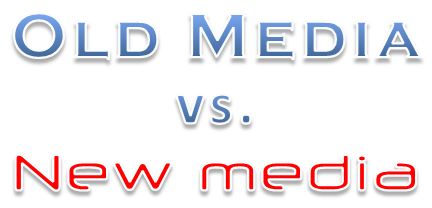This video reveals something shocking about Old Media: they are doing more new media stuff than any New Media operation: Why? They have much greater resources and they’re scared
Don’t be fooled: just because the established players can sometimes seem predictably traditional about their core business models, that doesn’t mean that they aren’t also pioneering some seriously bleeding-edge solutions.
The panel in the video above was held in Los Angeles on November 9, 2011 at an event called Streaming Media West.
How Old Media Is Embracing Online Video and New Media
Moderator: Troy Dreier, Senior Associate Editor, StreamingMedia.com
Richard Tanner, Senior Producer, Video, The New York Times
Jeff Freund, VP, GM, Web Content Management Group, Limelight Networks
Marco Parente, Sr. Product Manager, Video, The Nielsen Company
Darren Feher, CEO, Conviva
And if you don’t think they sounded very scared in that video, just try this one:
That second video starts with Larry Ingrassia, Business Editor of The New York Times, speaking at an event called TEDxUIllinois Newspapers in the Digital Age.
So much for “the newspaper’s view of Old Media vs. New Media”: what about the TV channel’s perspective? What new things are keeping them awake at night? (by the way, I found this next video clip on Beet.TV, which is a site I can unreservedly recommend for watching clips which keep you up to date with new developments in the online video business).
Although MSNBC president and publisher Charlie Tillinghast is very clear in the clip above on the need to make more use of video to convey things that defy verbal description, what is more strategically relevant in his comments is the recognition that, in contrast with broadcast news reporting, online ‘the story is already there in print’ and the video has to ‘do something that the text just can’t do’.
A d v e r t i s e m e n t
Is your startup accelerator in trouble?
- is the whole thing starting to look like a ‘one hit wonder’?
- were the applicants below expectations?
- are you feeling out of your depth?
- is the schedule beginning to look unrealistic?
- are you beginning to feel that you ‘went native’ with the founders’ optimism?
You’re not alone
You need to talk to us
We’ve been studying startup accelerators
It turns out these problems, and a whole lot more, affect all accelerators in their early stages
They can all be put right
iij Consulting
That particular relationship between the printed word and video has not been something a traditional TV broadcast network has ever had to take into account when constructing their core content.
Just like his observation that there’s something not quite right about perpetuating the (up until now?) supposedly indispensable requirement for ‘talking heads’ in this context, you can finally hear new things begin to kick in: the grudging acceptance that the relationship (which, up until right now, in 2012 has been remarkably change-resistant) between all the building blocks of traditional media definitely needs to be re-thought from scratch.
Those elements: text, voice-over narration, video workflow, anchors, studio scripts, labels, captions, ‘pieces to camera’, vision mixing, infographics, they all have to become the subject of brand new experimental juxtapositions.
Notice how this ‘content compositing’ issue is not quite the same as the kinds of technical integration and optimisation mentioned in the first video, which gave us such things as the need for solicited and unsolicited user-generated content submissions, as well as content aggregation and syndication, advertiser feeds, slots, rolls and overlays, and platform issues such as mobile, somehow managing to miraculously prevent seemingly unavoidably capricious video-buffering delays by using the magic of ‘reactive’ distribution optimisation (which to me sounds uncannily like live squid-juggling).
Personally, I think the tablet has appeared at just the right time, because it seems to have made genuinely imaginative ‘new format experimentation’ legitimate, fulfilling a promise of creative freedom that, for some reason, the web never kept.
For traditional media players, ‘making effective use of New Media’ isn’t just about having a ‘credible brand presence’ in ‘flavour of the moment’ New Media platforms like Pinterest, Tumblr and StumbleUpon.
Instead, it’s mostly about somehow managing to reconfigure their entire existing (and often mind-bogglingly huge) traditional media asset-base so that they can ‘seamlessly’ connect with the rapidly changing appetites of the new content consumer.
And unlike the ‘pure play’ new media startups, who are in a position to quickly, cheaply and painlessly embrace whatever new thing seems to suddenly be producing impressive takeup numbers, the industry titans these days regularly find themselves having to consider whether they should be committing to massive investments in strategic technological and structural innovation, changes which are accompanied by tremendous risks, in the face of a media future which seems less predictable than ever.
And as if that wasn’t scary enough, even the least adventurous are finally recognising that the risk of ‘deferring strategic transformation’ doesn’t even bear thinking about any more.


